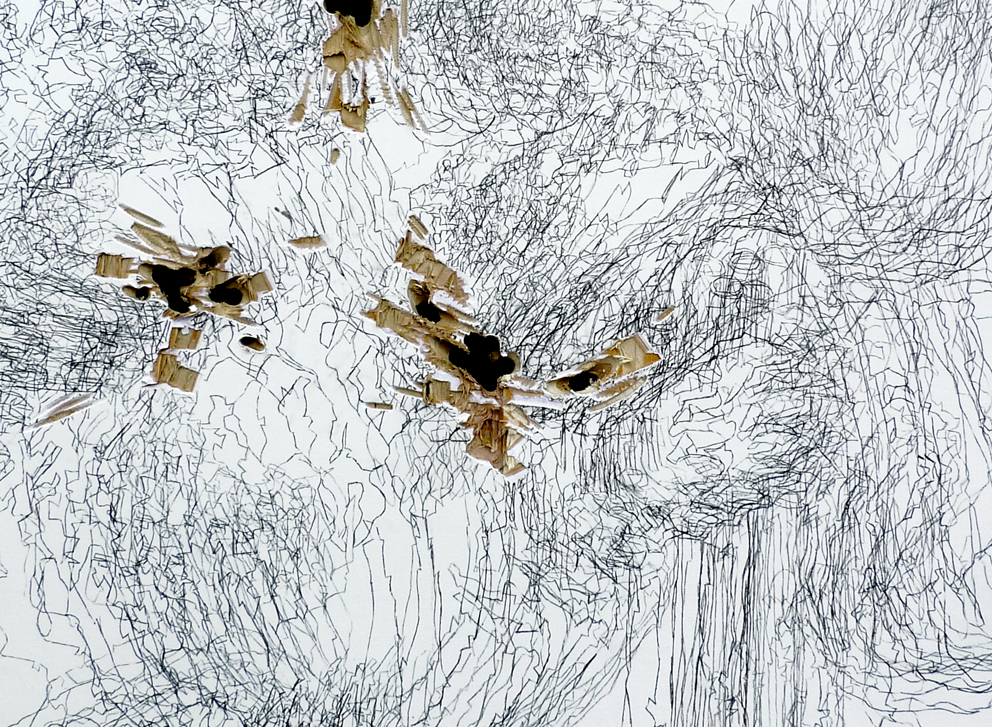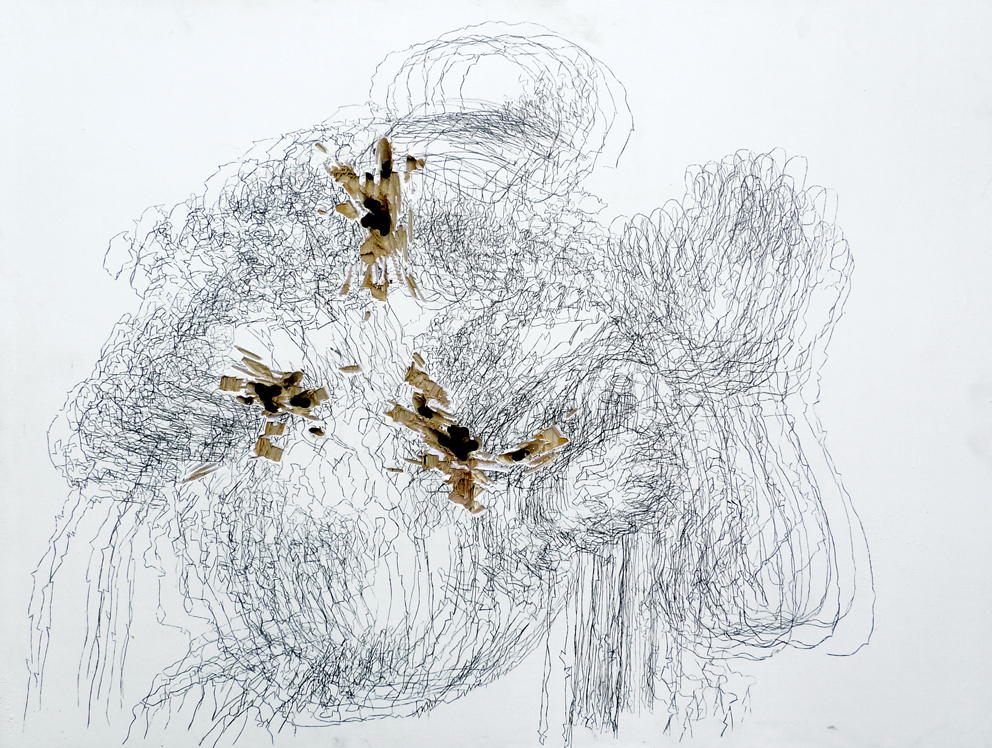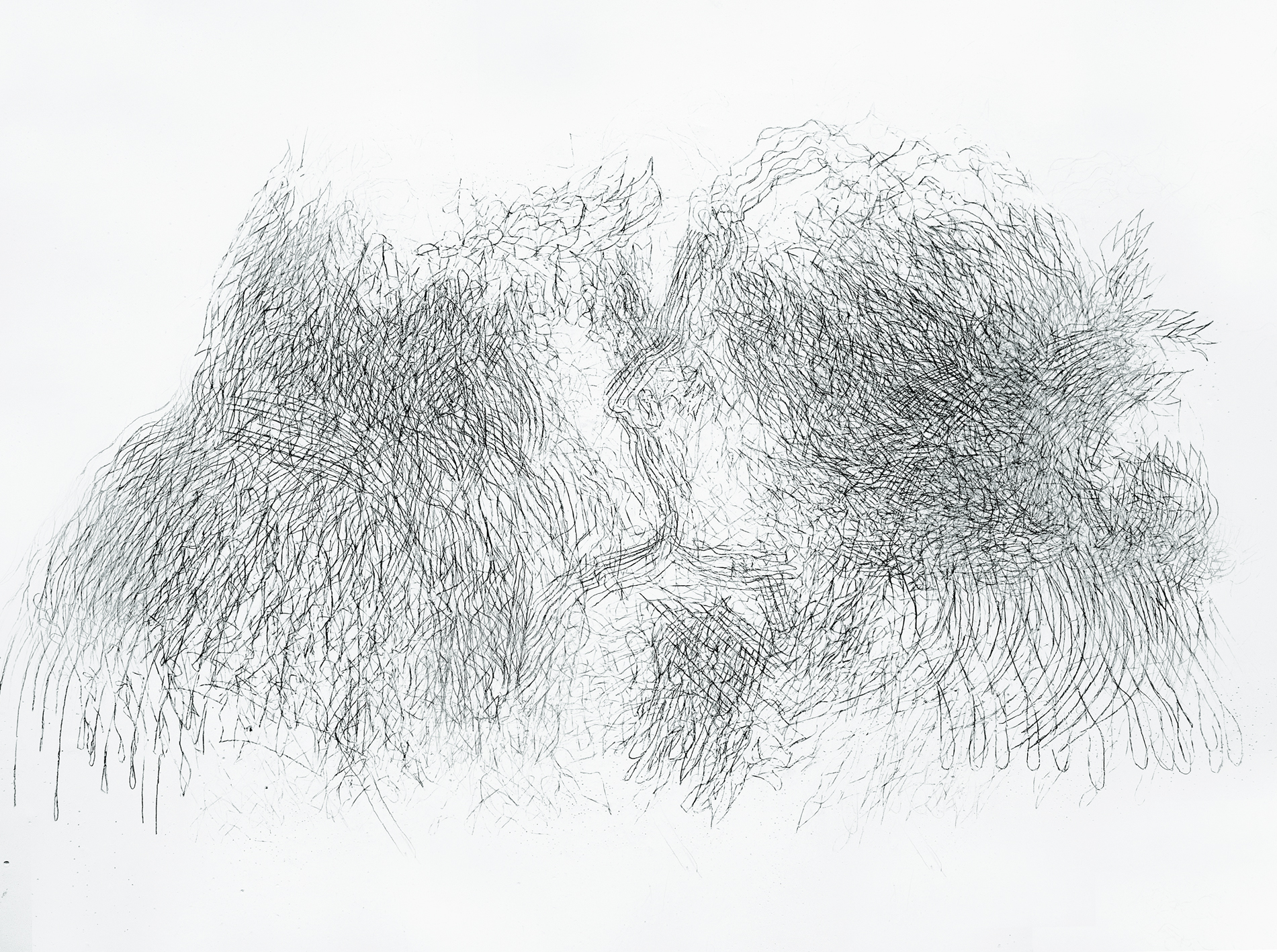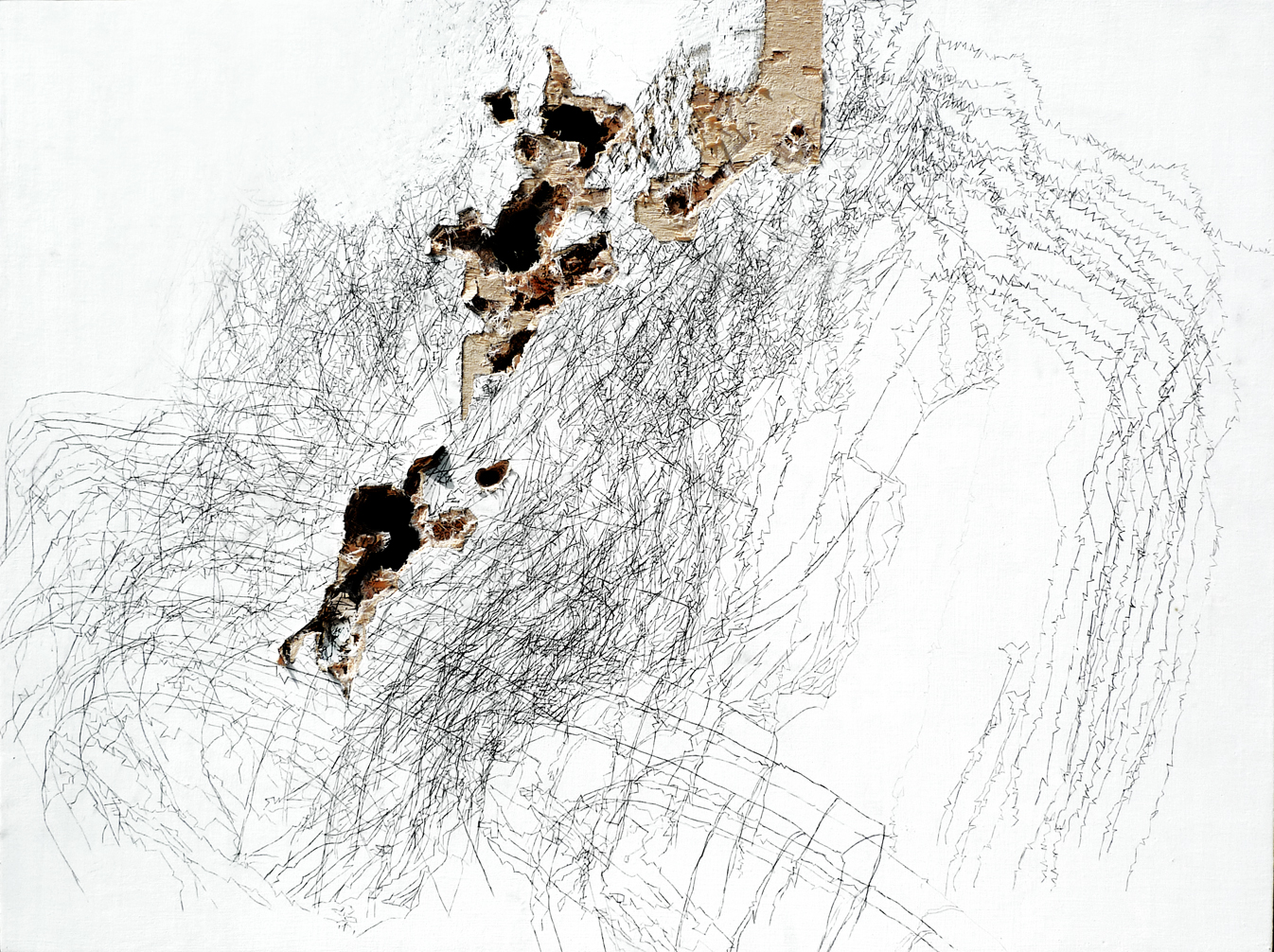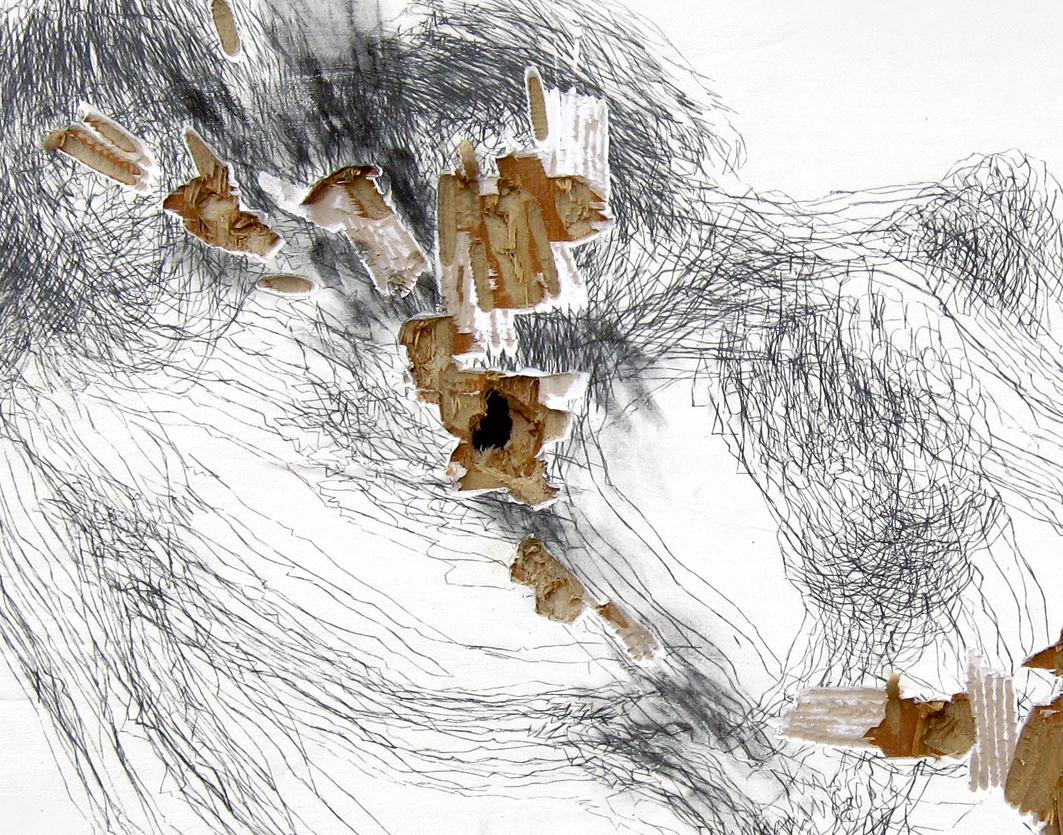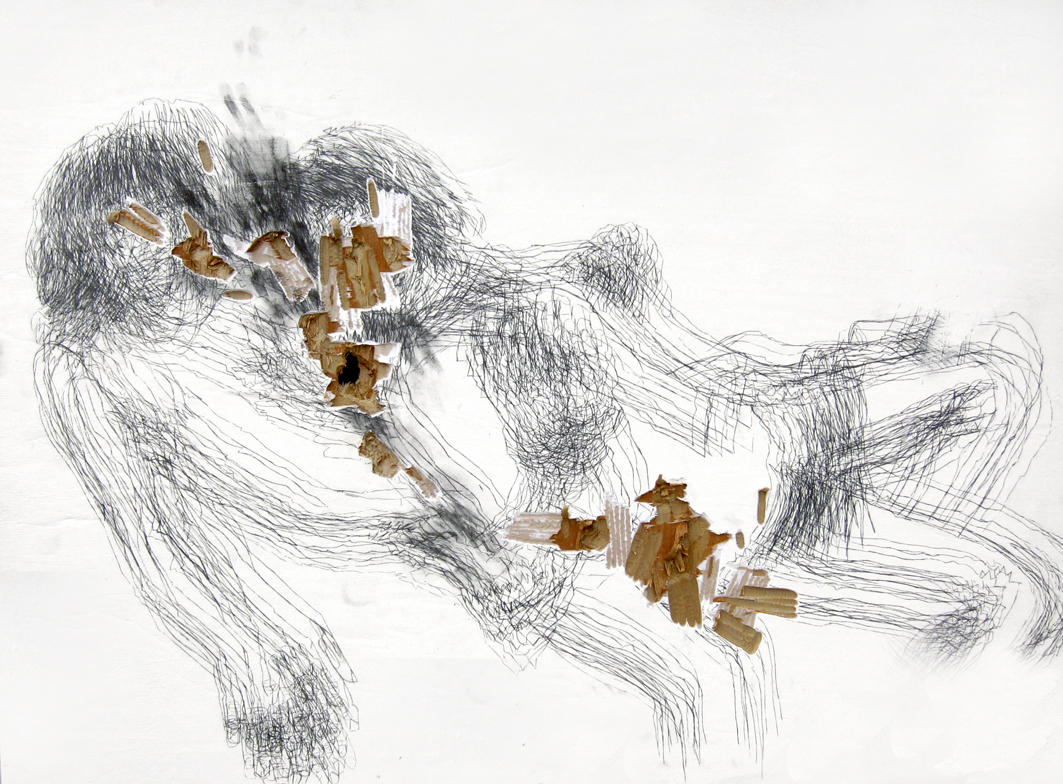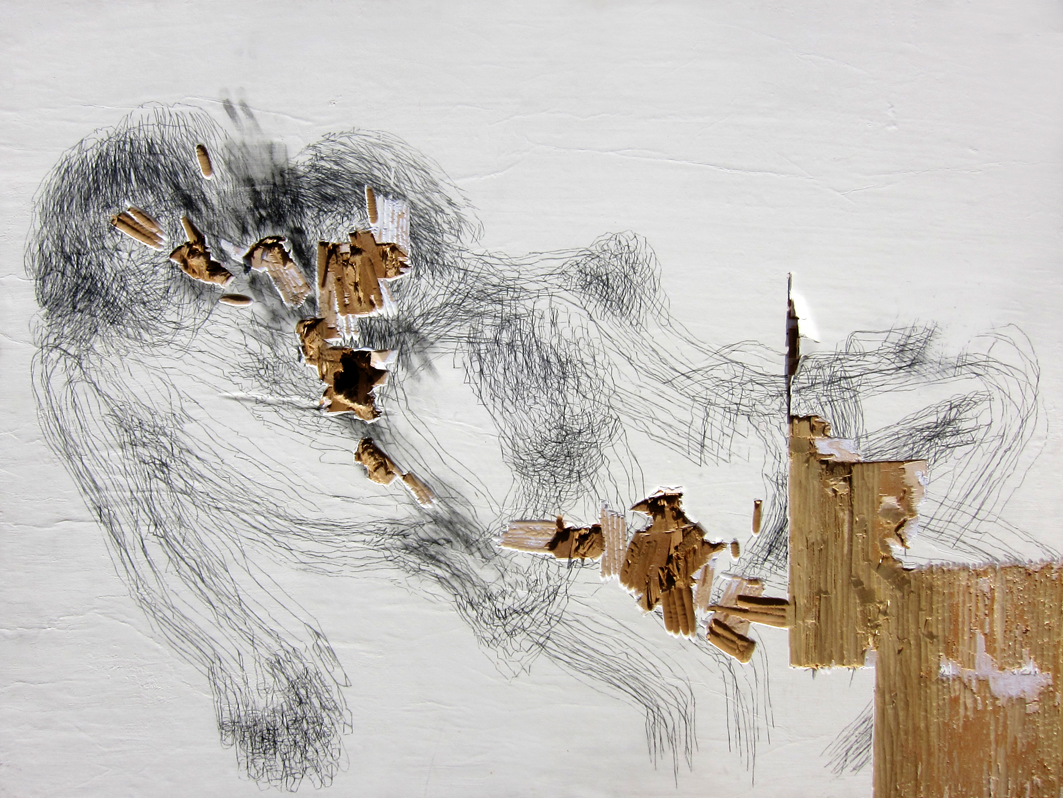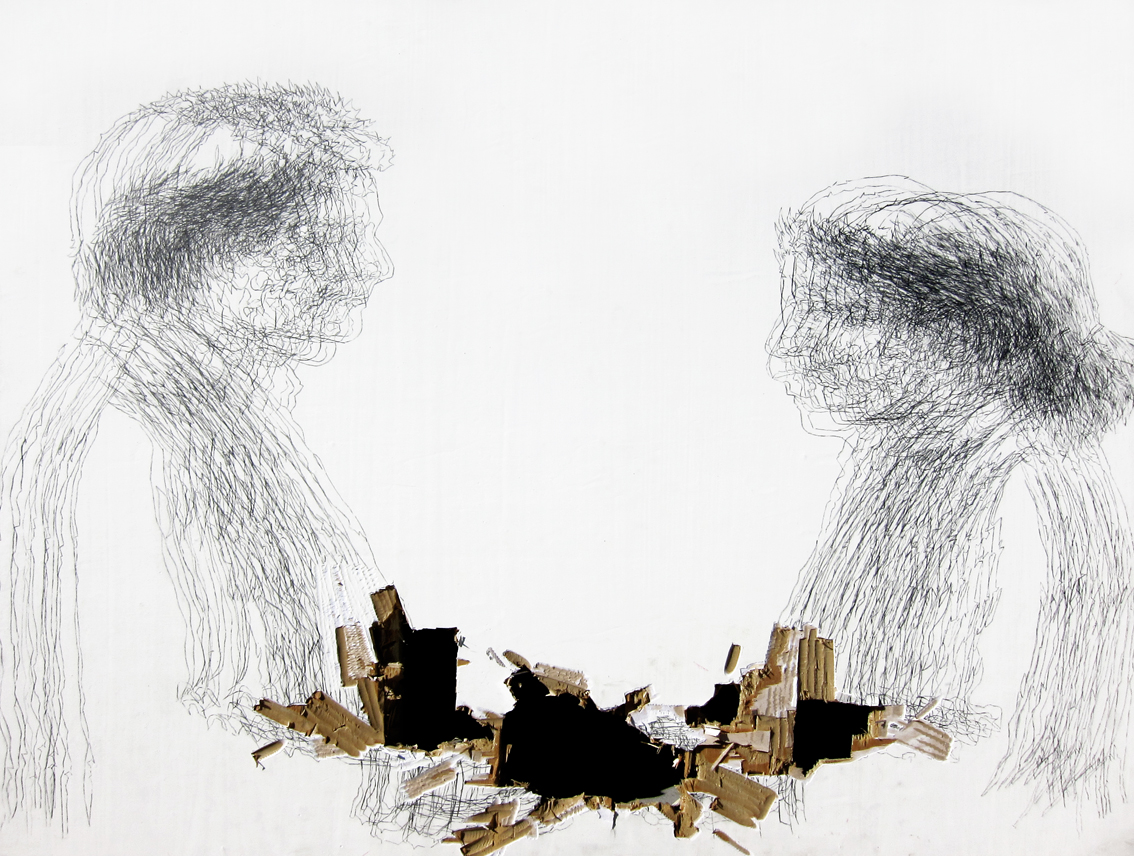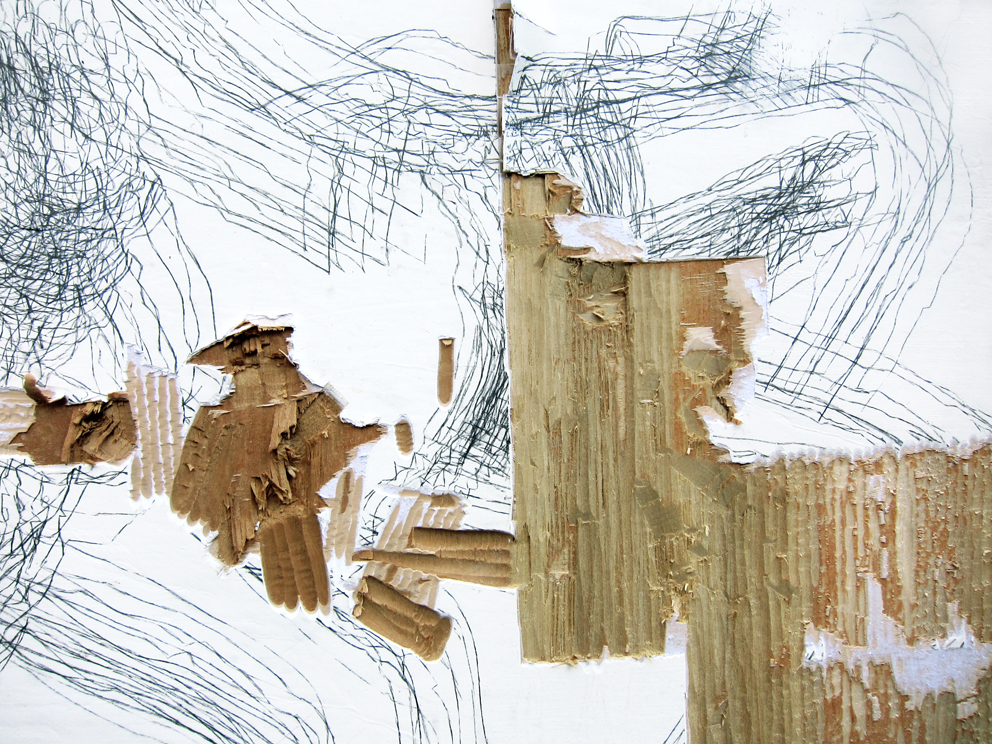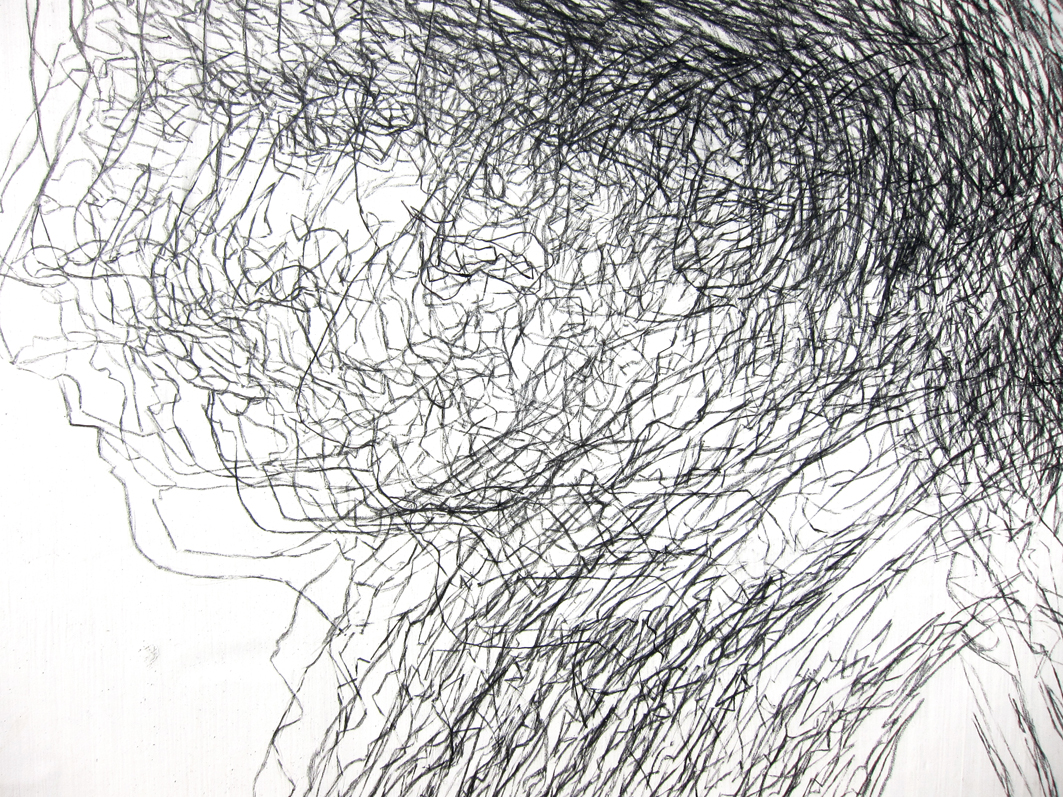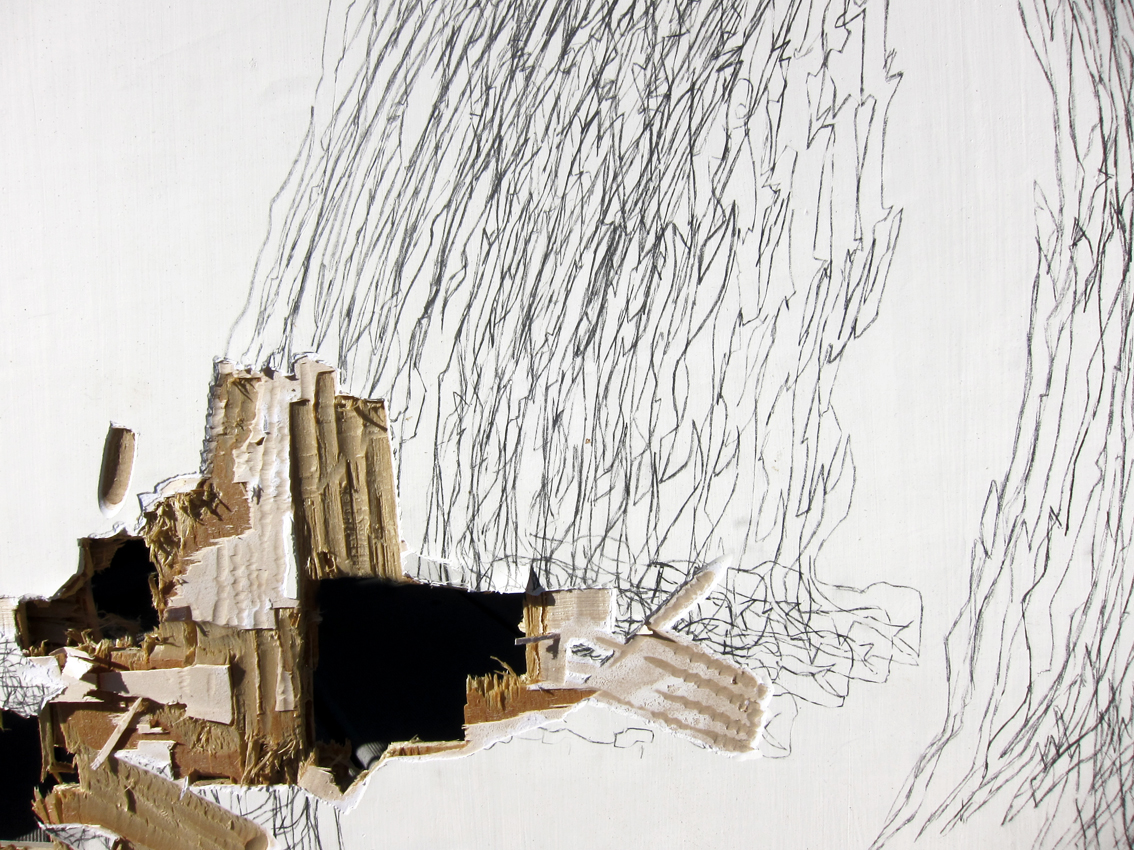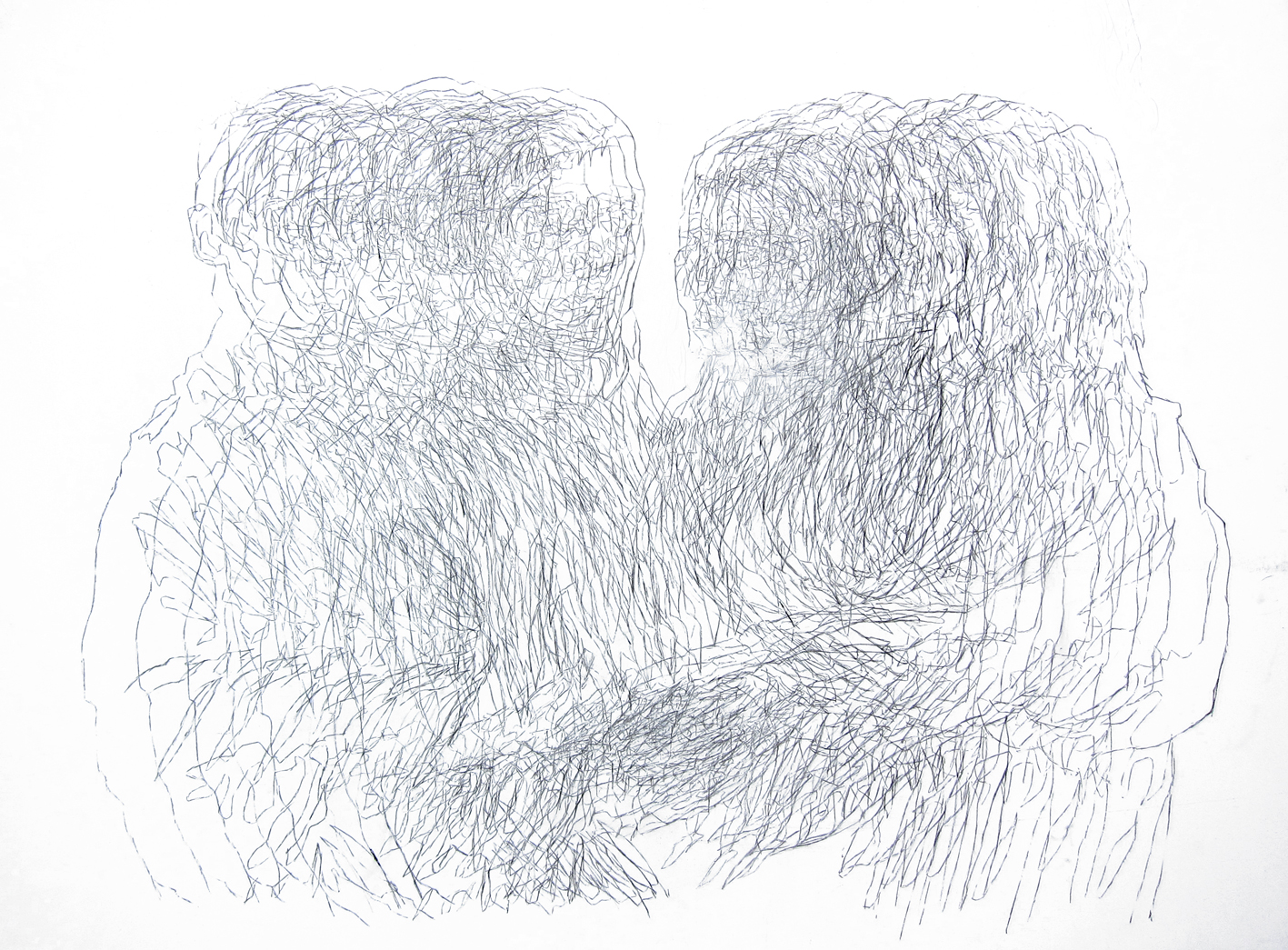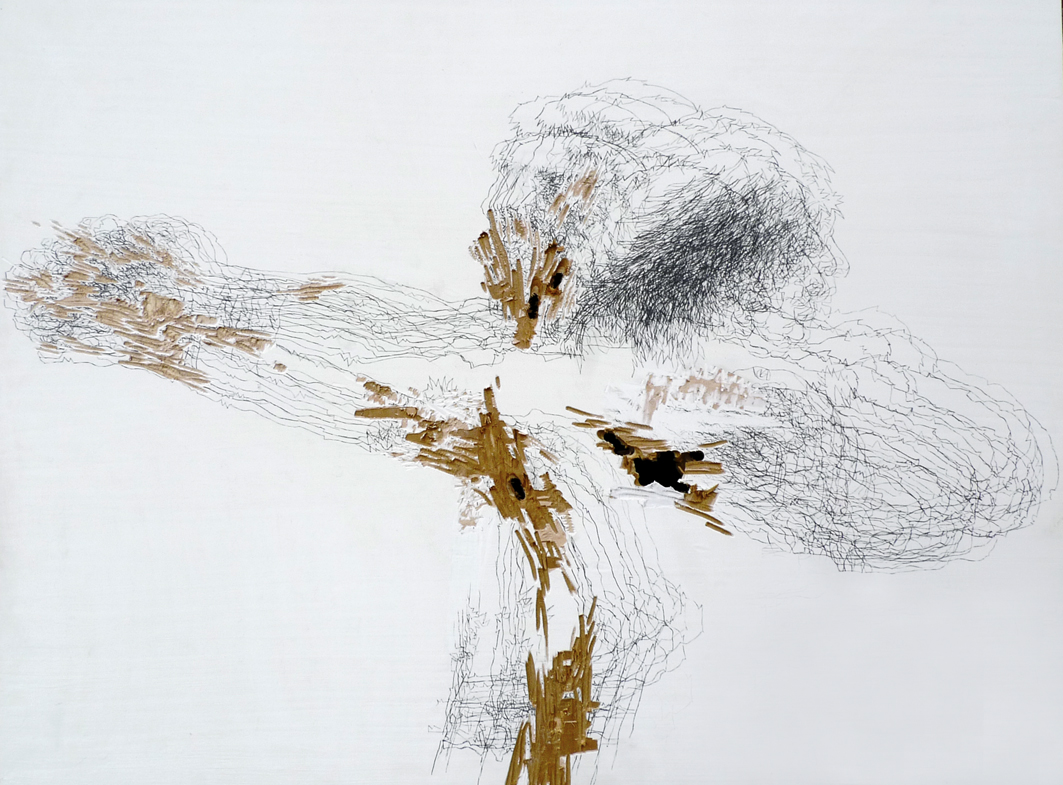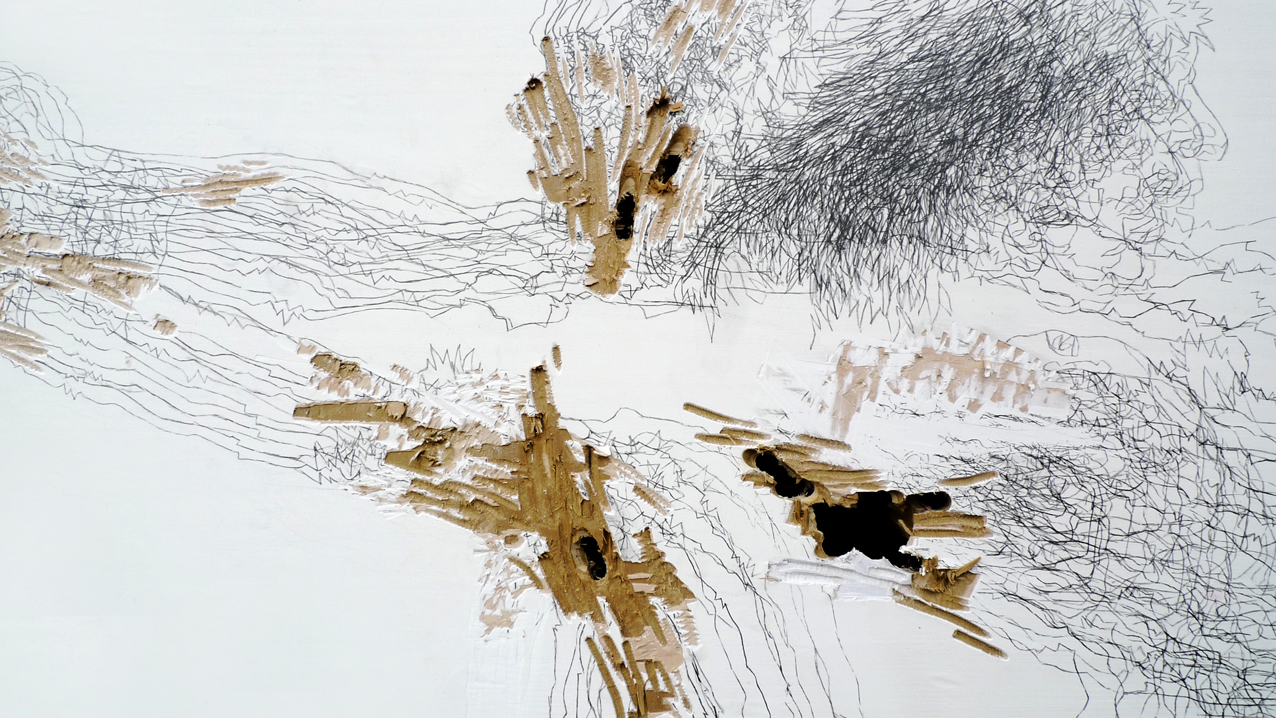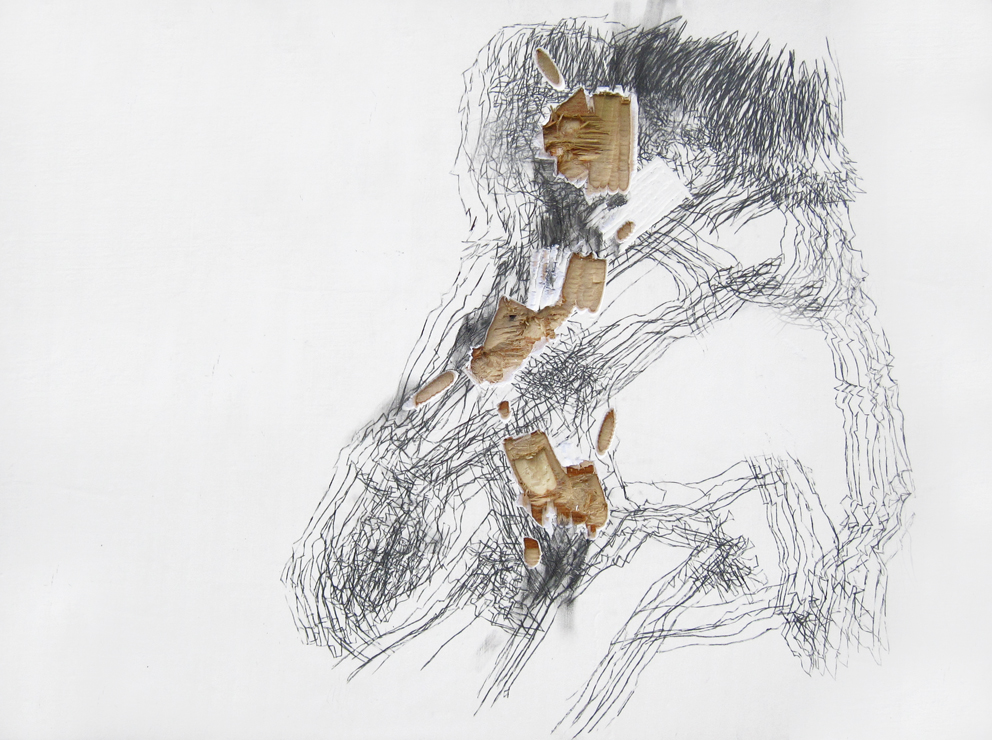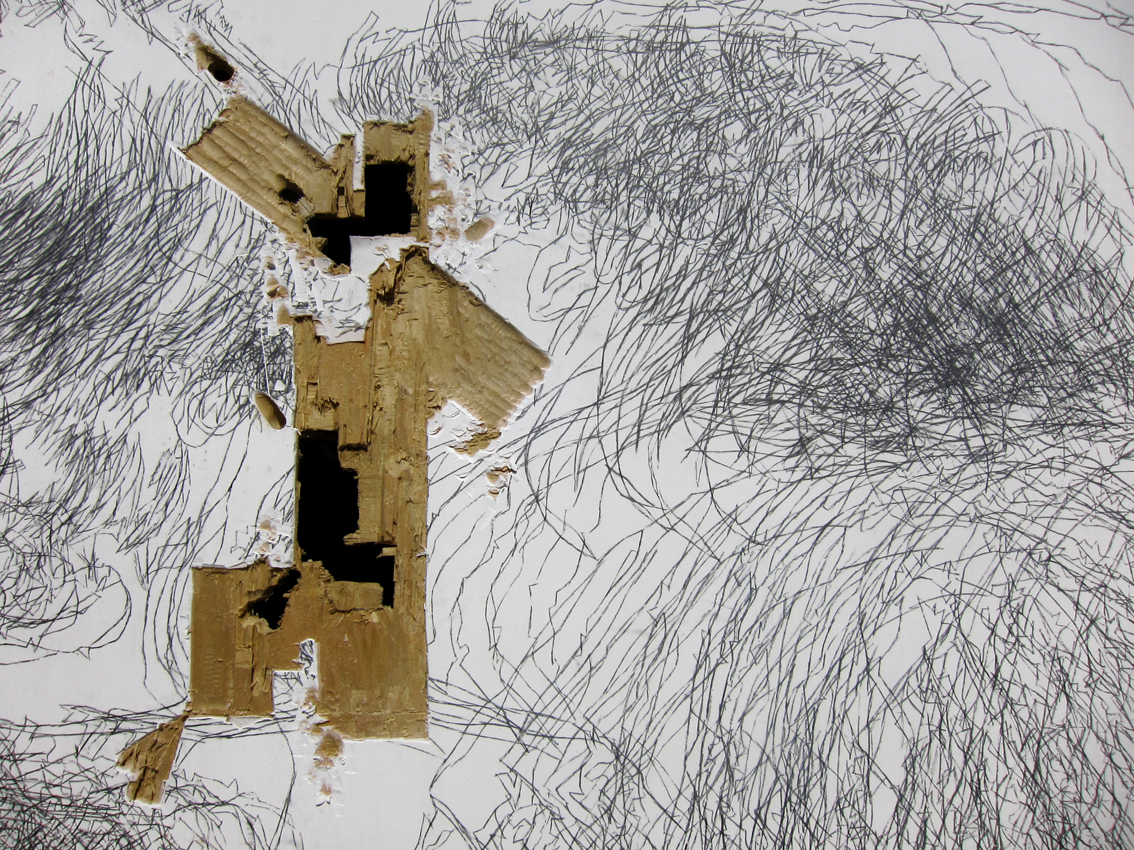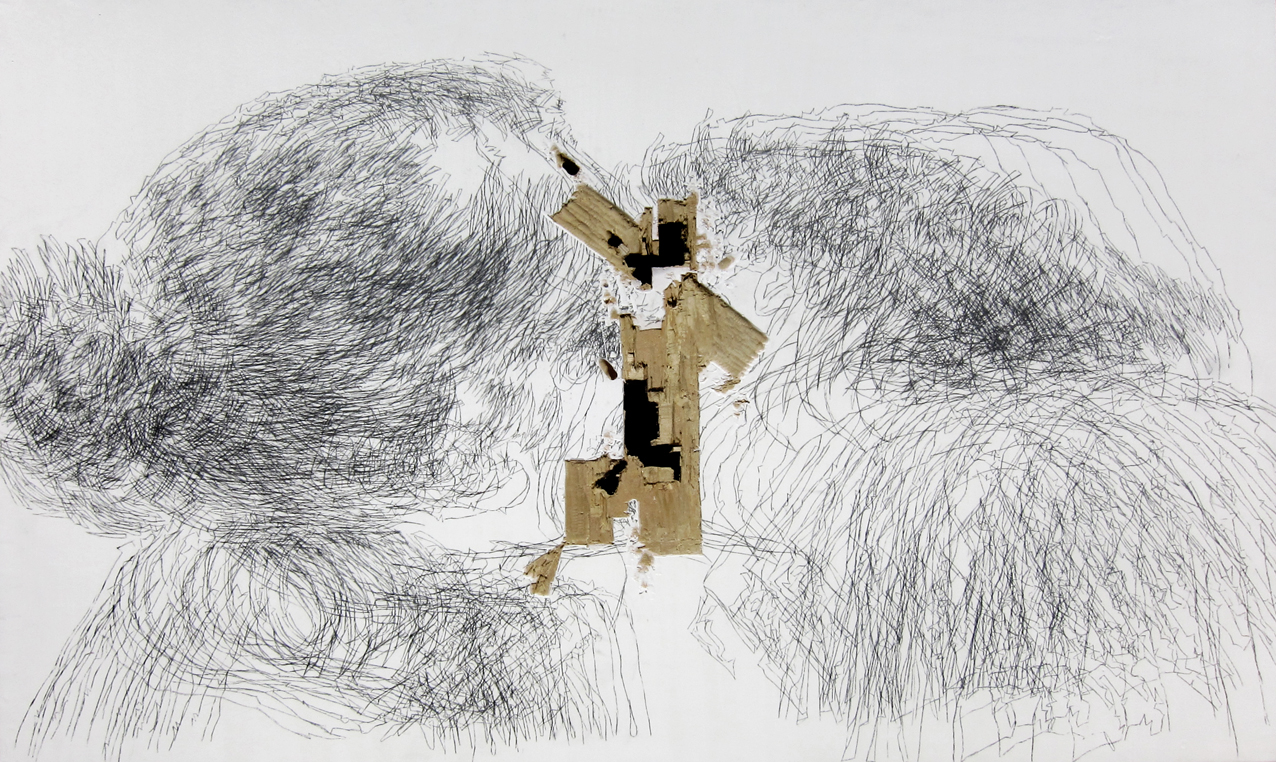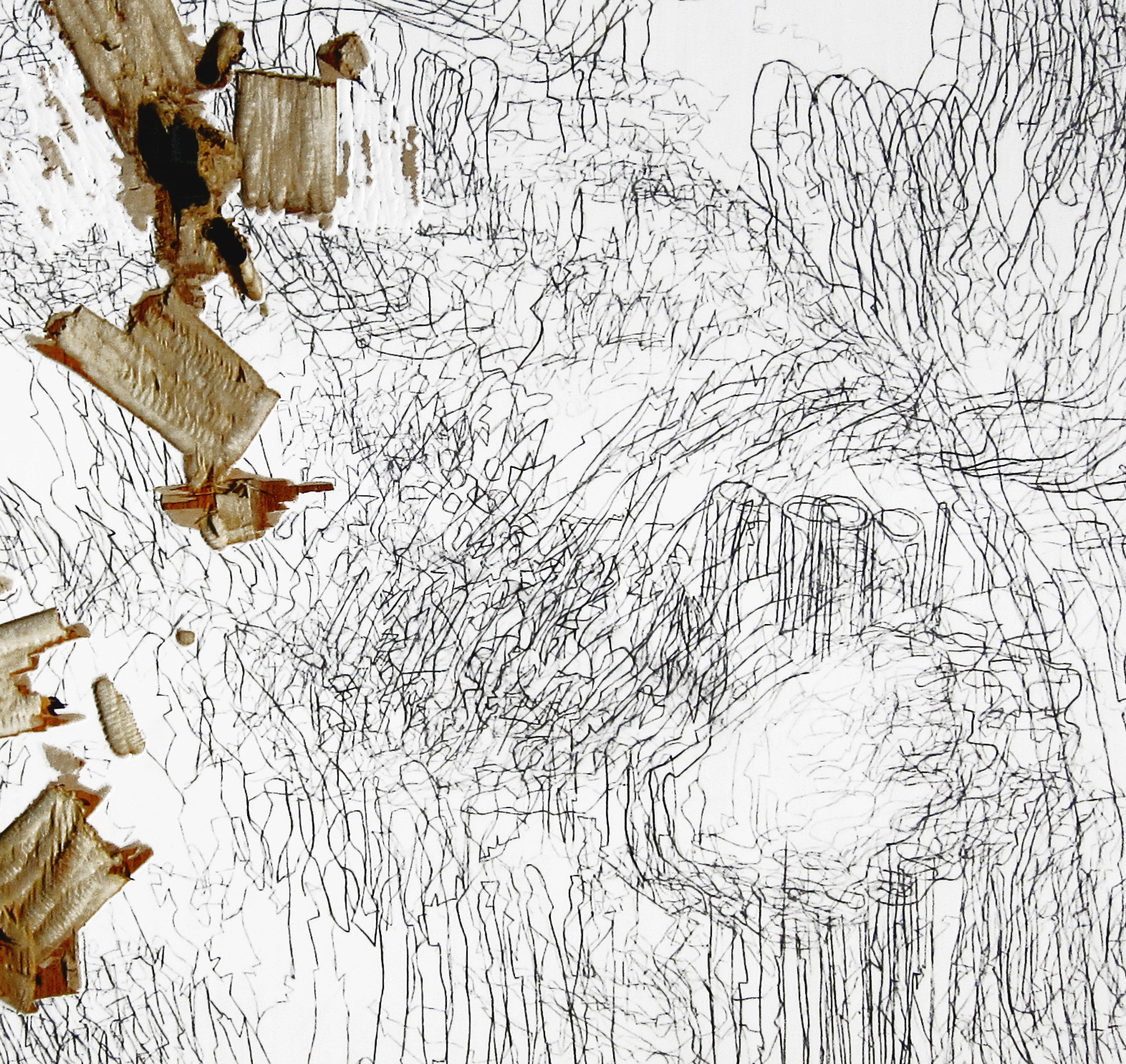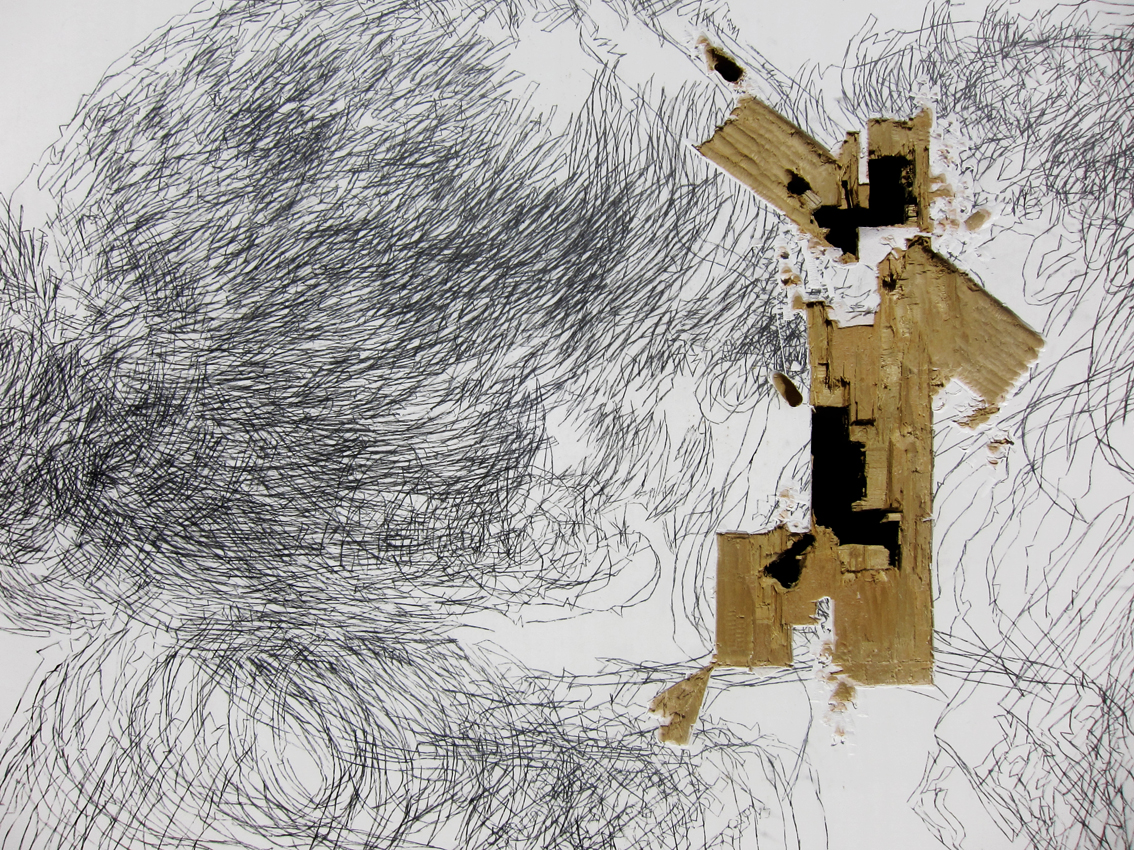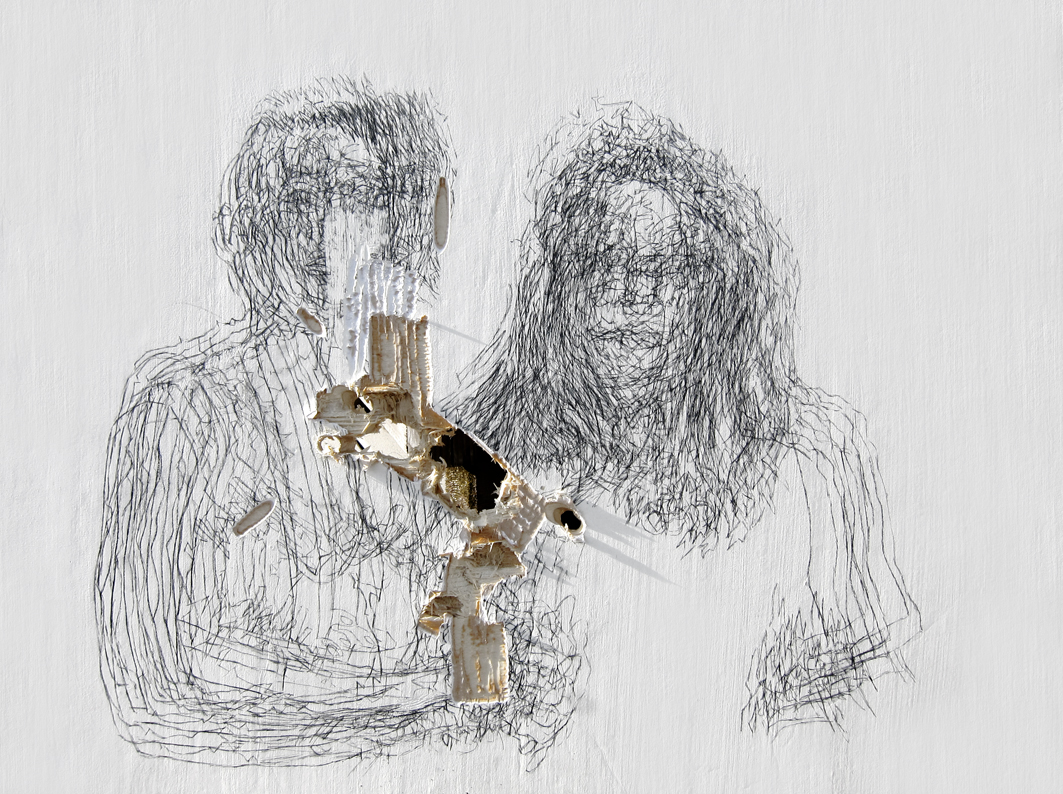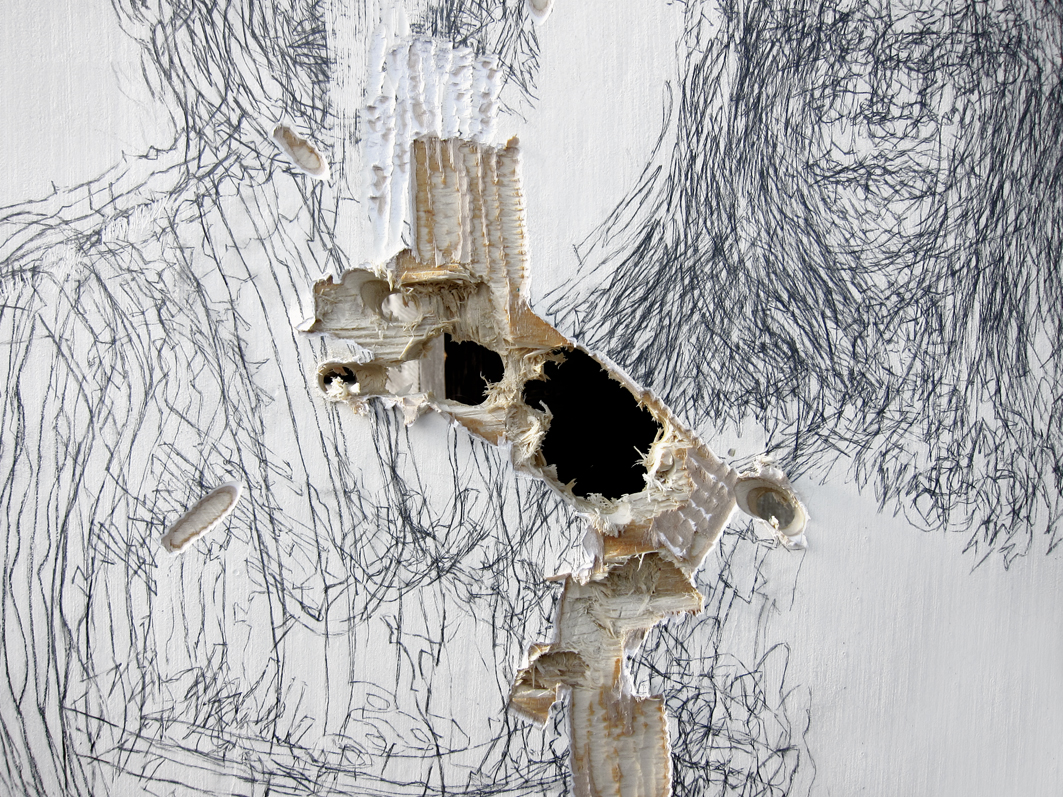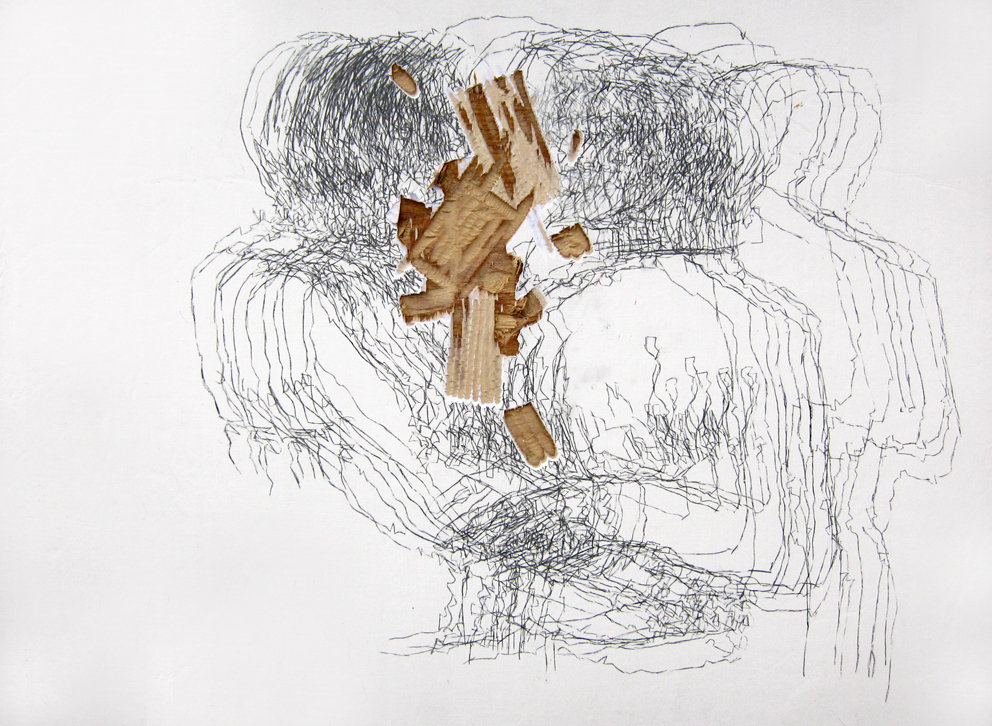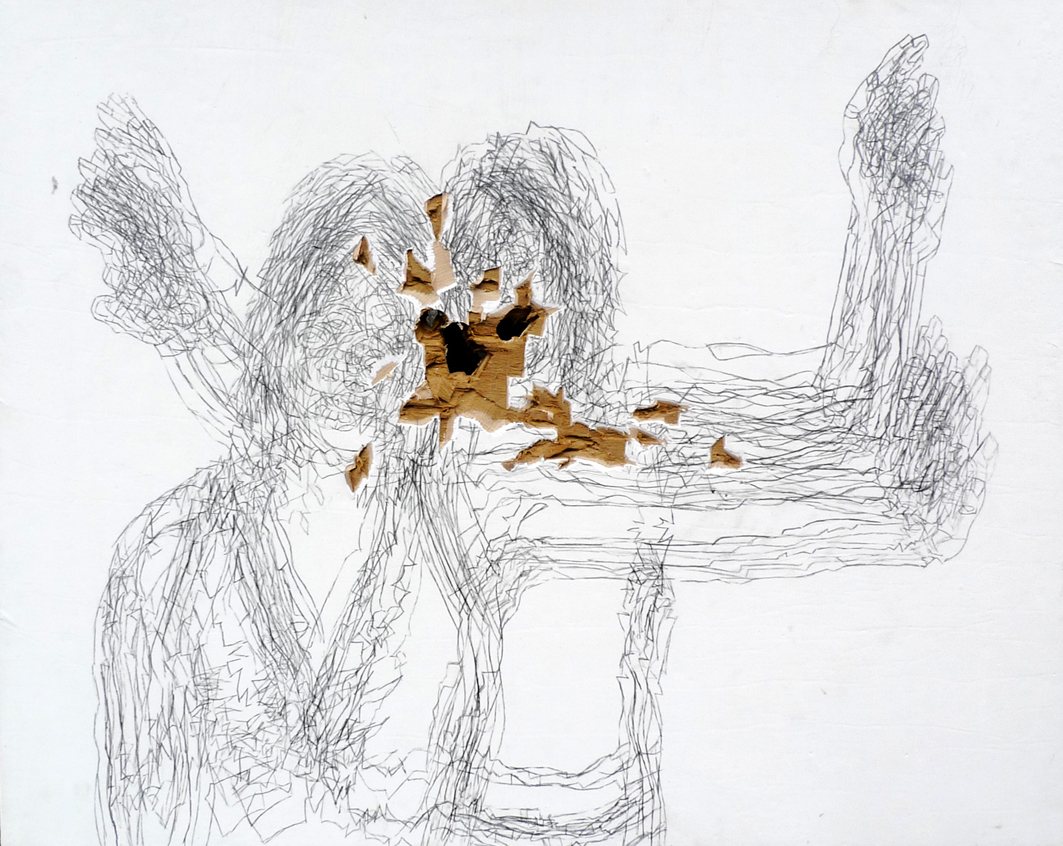Double Portraits And The Fourth Hand
By using and manipulating with great obsession, documents depicting Marina Abramovicz and Ulay while intensely performing, Genesis P Orridge and Lady Jaye attempting to resemble each other, Linda Montano and Tehching Hsieh practicing the far-off “year of the rope”, Chabannes include in her work cases of individual disappearance through extreme collaboration and its deep impact on the process involved in her practice. First, a map of the original picture is drawn upon numerous layers of tracing paper; then, the data is endlessly flipped over, transferred and overlapped on a wood panel until the borders of each of the protagonists fade away. Chabannes deliberately demolish parts of her drawings and sculptures, not only with the intention to recall the archeological protocol, gestures and its metaphoric strength, but also to suppress specific areas where the inseparable collaborators are in physical contact, where stands the third identity they created. Chabannes also attempt to challenge and destroy the established icons she chose to employ and evoke her search for a newfound expression. Such iconoclastic actions fuel her hope of recalling a long history of prohibited representation; they also allow to confront the conventionality of the fabrication of an art object. Altering an artwork already sacralized by the time and the virtuosity involved is definitely an act of defiance.
"In her drawings and installations Amelie Chabannes explores various derivations and representations of identity within philosophy, psychology, biometry, and art history. Her continuous project "Double Portraits and the Fourth Hand" uses and manipulates images of artists, including Marina Abramovic and Ulay in the midst of performing and Genesis P-Orridge and Lady Jaye attempting to resemble each other. To create her large scale works, Chabannes first maps the original depiction on numerous layers of tracing paper then flips the sheets over and transfers the overlapped drawings to the wall. In an effort to oppose the established artists she portrays, Chabannes also destroys the portion of the wall where the drawings overlap, both commenting on the inherently physical nature of their past performances and interjecting Chabannes’s own practice into their work." Curator
Zeljka Himbele
